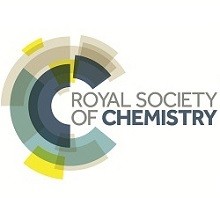
اسفنج گرافن برای جذب و واجذبی قابل تکرار و کارآمد آلودگی های آب
جستجوی روشهای بسیار کارآمد، کم هزینه و قوی برای ضدعفونی کردن و آلودگی زدایی آب از منبع به نقطه استفاده بسیار الزامی است. در اینجا، ما یک ماده جدید، اسفنج گرافن (GS)، برای تصفیه آب را ایجاد کردیم که با استفاده از ورقه های اکسید گرافن توسط تصفیه هیدروترمال با کمک تيوره مونتاژ شد. این GS ها, یک ساختار منفذ و خواص سطحی قابل تنظیم را نشان می دهند و از نظر مکانیکی قوی هستند. آنها توانایی جذب بالا برای آلودگی های مختلف آب مانند رنگ، روغن و بسیاری از دیگر حلال های آلی را نشان می دهند. ظرفیت جذب متیلن آبی و روغن دیزل در GSها می تواند به ترتیب به 184 mg g-1 و 129 g g-1 دست یابد. علاوه بر این، GS ها را می توان به طور مکرر با تصفیه ساده بدون ساختار واضح و تخریب عملکرد مورد استفاده قرار داد. علاوه بر این، ما رابطه بین ساختار و عملکرد جذب آلودگی GSها را مطالعه نمودیم. مشخص شد که عملکرد جذب رنگ GSها به شدت به غلظت بار سطحی انها و مساحت سطح ویژه آن بستگی دارد، اما ظرفیت جذب روغن عمدتا به مساحت سطح ویژهی آنها مربوط می شود و نشان دهنده مکانیزم جذب متفاوت است. این یافته ها, بسیاری از امکانات را برای استفاده از گرافن در تمیز کردن آب، از جمله گندزدایی، دفع مواد زائد، استفاده مجدد، احیا و دفع زباله باز می کند.
Seeking highly-efficient, low-cost and robust methods to disinfect and decontaminate water from source to point-of-use is very much in demand. Here, we developed a new material, graphene sponge (GS), for water treatment, which was assembled with graphene oxide sheets by hydrothermal treatment with the assistance of thiourea. These GSs show a tunable pore structure and surface properties, and are mechanically strong. They show high adsorption ability for various water contaminations such as dyes, oils and many other organic solvents. The adsorption capacity of methylene blue and diesel oil in GSs can reach 184 mg g1 and 129 g1 , respectively. Moreover, the GSs can be repeatedly used by simple treatment without obvious structure and performance degradation. Additionally, we studied the relationship between the structure and contamination adsorption performance of GSs. It was found that the dye adsorption performance of GSs strongly depends on their surface charge concentration and specific surface area, but the oil adsorption capacity is mainly related to their specific surface area, indicating the different adsorption mechanism. These findings open up many possibilities for the use of graphene in water cleaning, including disinfection, decontamination, re-use, reclamation and desalination.
مقدمه
آزمایش
تهیه GSها
مشخصات GSها
جذب و واجذبی رنگ
روغن و دیگر جذب های ارگانیک
اندازه گیری بالقوه زتا
نتایج و بررسی
تهیه و مشخص نمودن GSها
جذب و واجذبی رنگ در GSها
روغن های مختلف و جذب و واجذبی مواد آلی در GS
نتیجه گیری
Introduction
Experimental
Preparation of GSs
Characterization of GSs
Dye adsorption and desorption
Oil and other organics adsorption
Zeta potential measurement
Results and discussion
Preparation and characterization of GSs
Dyes adsorption and desorption in GSs
Various oils and organics absorption and desorption in GSs
Conclusions
- ترجمه فارسی مقاله با فرمت ورد (word) با قابلیت ویرایش، بدون آرم سایت ای ترجمه
- ترجمه فارسی مقاله با فرمت pdf، بدون آرم سایت ای ترجمه
